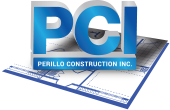As commercial real estate evolves to meet modern market demands, multi-tenant spaces are becoming increasingly popular across Florida. From retail centers and office complexes to mixed-use developments, landlords and developers are recognizing the value of creating adaptable environments that support multiple tenants under one roof. Designing and renovating for multi-tenant occupancy requires a strategic approach, one that balances flexibility, efficiency, and tenant satisfaction.
Whether a space is being converted for multiple tenants for the first time or an existing setup is being optimized, understanding the core principles of multi-tenant design is essential for long-term success.
Understanding Multi-Tenant Space Needs
The key to a successful multi-tenant commercial space is flexibility. Tenants may vary widely in size, brand identity, operational hours, and technical requirements. A legal office and a fitness studio, for instance, will have vastly different spatial needs, privacy expectations, and infrastructure demands.
This diversity necessitates a design approach that supports clear divisions between tenants, while still maximizing the usability and visual appeal of shared spaces. It also means accounting for things like individual utility metering, sound insulation, ADA compliance, and egress planning, especially when dealing with older buildings being converted to meet modern codes.
Designing Flexible Infrastructure and Layouts
Creating a space that can evolve with changing tenant needs starts with flexible infrastructure. Movable partition walls, universal mechanical systems, and modular layouts allow landlords to adapt square footage over time as tenants come and go or grow within the property.
Open floor plans can be easily subdivided into smaller suites or merged into larger ones, depending on demand. This adaptability is particularly beneficial in volatile leasing markets where tenant turnover can happen quickly, and rapid occupancy turnaround is vital to maintaining consistent cash flow.
Shared areas like hallways, break rooms, and restrooms must be designed not just for efficiency, but also to reflect the quality and character of the property. A modern, well-lit lobby or communal lounge can elevate the entire tenant experience and help attract high-value lessees.
Building Systems for Independent Operation
One of the biggest challenges in multi-tenant design is ensuring each unit can operate independently. HVAC zoning, electrical panels, and plumbing systems must be engineered to serve individual spaces without overlap. Tenants will expect autonomy over their environment—controlling lighting, temperature, and network infrastructure without disrupting their neighbors.
Similarly, fire and life safety systems must be designed to provide adequate protection to each tenant space while meeting state and local code requirements. This might include adding new fire-rated separations, updated sprinkler systems, or exit signage to guide building occupants in an emergency.
Security also becomes a key design consideration in multi-tenant environments. Controlled access systems, surveillance, and unit-specific alarms can all contribute to a safe and secure space that appeals to quality tenants.
Meeting the Needs of Today’s Tenants
Today’s tenants are looking for more than just square footage. They’re looking for value-added features that support their businesses and enhance the experience of their employees and customers.
For office tenants, amenities like shared conference rooms, phone booths, wellness rooms, and bike storage are becoming increasingly common. In retail, tenants are drawn to locations that offer good visibility, foot traffic, and appealing public spaces. Outdoor seating areas, shaded walkways, and well-maintained landscaping all contribute to the perception of value and help build a sense of place.
Sustainability is also a growing priority. Energy-efficient systems, water conservation measures, and green certifications like LEED can differentiate a multi-tenant space in a crowded market and contribute to long-term operational savings for landlords and tenants alike.
Maximizing ROI Through Smart Renovations
Investing in a multi-tenant renovation or build-out can significantly increase a property’s rental income potential. However, this must be done with careful consideration of construction costs, local zoning regulations, and the target tenant mix.
To maximize ROI, it’s critical to conduct a feasibility analysis that includes structural assessments, code reviews, and tenant demand studies. From there, property owners can work with a qualified contractor to plan and execute a renovation that aligns with their budget, timeline, and long-term investment goals.
Partnering with a construction firm that understands the complexities of multi-tenant spaces can make all the difference. From identifying the right layout configurations to handling the nuances of phased construction while tenants remain operational, a knowledgeable partner ensures every square foot is working to its full potential.
Built for Growth
The rise of co-working spaces, flexible lease arrangements, and hybrid business models has made adaptable commercial properties more valuable than ever. Property owners who embrace multi-tenant design can unlock new opportunities for growth, attracting a broader range of tenants, increasing occupancy rates, and future-proofing their assets.
Perillo Construction offers expert guidance and construction services to help commercial property owners transform their buildings into modern, tenant-ready environments. From layout planning and build-outs to system upgrades and finishes, Perillo delivers solutions that support flexibility, compliance, and long-term value.
To learn more about how they can support your next commercial renovation or conversion project, reach out to their team here.

